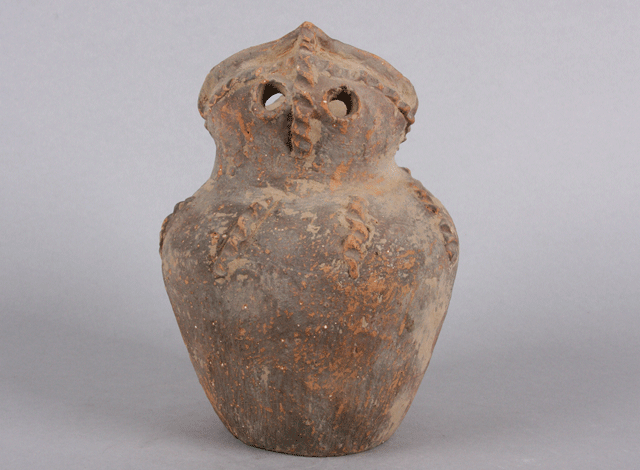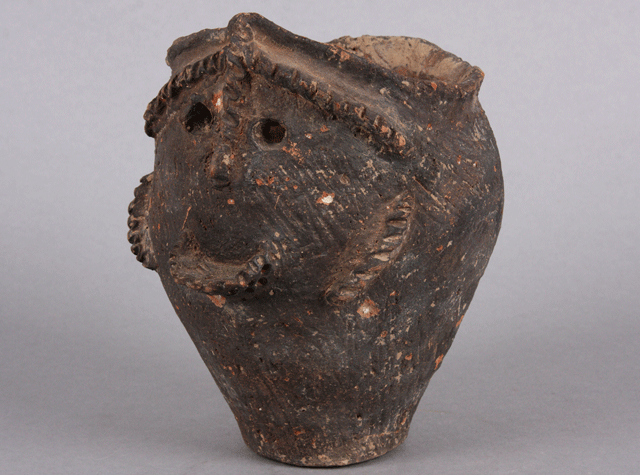
2012.91.19, Tripod jar with face, low-fired pottery; 2200–1600 B.C.
Eason Eige Collection; photo by B. Bernard
For a second view of this object, click here.

2012.91.19, Tripod jar with face, low-fired pottery; 2200–1600 B.C.
Eason Eige Collection; photo by B. Bernard
For a second view of this object, click
here.
The Qijia culture bridges the Neolithic period and the Bronze age; it was a
farming culture that included a heavy use of horses. Qijia potters did not use
wheels, as might be guessed from looking at the images on this page.
The faces on such pots have been interpreted as being from humans or owls.
The next photo shows an additional example of Qijia pottery with a faces. The
one above measures 7 1/4 inches (28 cm) tall; the one below is 5 1/2 inches
(14 cm) tall.

2012.91.17, jar with face, low-fired pottery; 2200–1600 B.C.
Eason Eige Collection; photo by B. Bernard.
For a second view of this object, click
here.
You can click here to see a Qijia vessel shaped like a bird, and here to see an example of more conventional Qijia pottery.
See source code for copyright information. Page last revised on June 15, 2016. Please report problems to dap@unm.edu